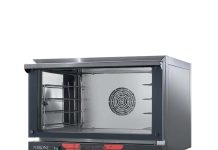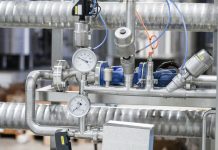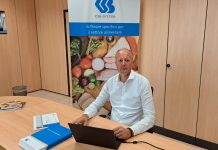
Pre- and post-harvest treatments, washing, stabilisation, and packaging of fourth range vegetables. Here the objectives of this Italian three-year project of research promoting innovation in the sector of fresh-cut vegetables (fourth range products).
On September 3, 2014, the first results of the Stayfresh project were presented at the Free University of Bozen-Bolzano. The three-year research, financially supported by Agro-Alimentare e Ricerca (a consortium of banking foundations supporting scientific research in the agro-food sector), aimed at the development of new integrated approaches for treating fresh-cut vegetables along the different processing stages: pre- and post-harvest, washing, stabilisation, and packaging. Furthermore, this project addressed the development of new systems for monitoring product safety and quality, and assessed the environmental and economic sustainability of the proposed solutions. Research considered two major topics: apples (Malus comunis Var. Golden delicius) (addressed by the convention held in Bolzano), and Valerianella (Valerianella locusta), whose results will be dealt with in a similar convention in Milan. We asked Professor Maria Cristina Nicoli, Professor in Food Technology at the University of Udine and project coordinator, to explain specific targets and results.
Which is the origin of this project?
Stayfresh was born as a development of a previous project of the Friuli Venezia Giulia Region, with the cooperation of different research groups of Udine. When Ager’s call for ideas and proposals was published, we extended our studies and involved research centres in other cities, as those of the University of Teramo, Bologna, Milan, Bolzano, the CRA-IAA of Milan and the Parco Tecnologico Padano”. The project addressed various issues common to all stages along the production chain of fresh-cut products. For instance, we tested the use of natural antagonists for reducing plant diseases during cultivation, and the use of Aureobasidium pullulans to stop the attacks by Alternaria  Arborescens (sooty mould). Even in post-harvesting stages, alternative decontamination approaches were tested to improve the shelf-life, as the use of essential oils or UV-light. “We tested two devices for UV-light treatment”, explains Professor Nicoli: “a standard UV lamp and a pulsed-light source system. In terms of shelf-life extension we obtained are essentially identical results: bio-burden is reduced to one hundredth of the burden that would develop without light. Hence, the time necessary to reach the limit beyond which the product is no longer edible gets longer (7 Log CFU/g). The positive side of this technology is that it can be implemented also on packaged apple slices, as long as the film used is permeable to UV-rays. However, there are differences between the two methods: exposure to pulsed light can be limited to just few micro-seconds; however, this technology is regulated by the European regulation on novel food and its implementation in the production chain is subject to EU authorization. The continuous UV lamp, on the other hand, is a standard technology, which can be implemented without problems in any stage of the processing line.” Another aim of this project is the development of a low-cost but effective method for the identification of potentially pathogenic micro-flora in fourth-range apples. So, an early diagnostic system was set up for the simultaneous identification of various pathogens (Salmonella spp, Listeria spp, Escherichia Coli), in the attempt of by-passing the limits of current test protocols: operating procedures and timing that extend beyond 24-48 hours; identification of a limited number of pathogens with every test; and identification of micro-organisms only on species and not on strain level. The test developed by Stayfresh provides discrimination even between the various pathogen strains, facilitating the identification of the contamination source. Even tests on the specificity of designed probes and tests repeatability produced positive results. In particular, the test developed for Salmonella meets all requirements of the European regulation UNI EN ISO 6579 (regulating the methods for the detection of this bacterial pathogen), although with response times comprised between 24 and 48 hours. Even several limits of this multi-pathogenic test were detected regarding sensitivity and timing; new in-depth studies are scheduled in order to identify a diagnostic platform that better suits the needs of production cycles.
Arborescens (sooty mould). Even in post-harvesting stages, alternative decontamination approaches were tested to improve the shelf-life, as the use of essential oils or UV-light. “We tested two devices for UV-light treatment”, explains Professor Nicoli: “a standard UV lamp and a pulsed-light source system. In terms of shelf-life extension we obtained are essentially identical results: bio-burden is reduced to one hundredth of the burden that would develop without light. Hence, the time necessary to reach the limit beyond which the product is no longer edible gets longer (7 Log CFU/g). The positive side of this technology is that it can be implemented also on packaged apple slices, as long as the film used is permeable to UV-rays. However, there are differences between the two methods: exposure to pulsed light can be limited to just few micro-seconds; however, this technology is regulated by the European regulation on novel food and its implementation in the production chain is subject to EU authorization. The continuous UV lamp, on the other hand, is a standard technology, which can be implemented without problems in any stage of the processing line.” Another aim of this project is the development of a low-cost but effective method for the identification of potentially pathogenic micro-flora in fourth-range apples. So, an early diagnostic system was set up for the simultaneous identification of various pathogens (Salmonella spp, Listeria spp, Escherichia Coli), in the attempt of by-passing the limits of current test protocols: operating procedures and timing that extend beyond 24-48 hours; identification of a limited number of pathogens with every test; and identification of micro-organisms only on species and not on strain level. The test developed by Stayfresh provides discrimination even between the various pathogen strains, facilitating the identification of the contamination source. Even tests on the specificity of designed probes and tests repeatability produced positive results. In particular, the test developed for Salmonella meets all requirements of the European regulation UNI EN ISO 6579 (regulating the methods for the detection of this bacterial pathogen), although with response times comprised between 24 and 48 hours. Even several limits of this multi-pathogenic test were detected regarding sensitivity and timing; new in-depth studies are scheduled in order to identify a diagnostic platform that better suits the needs of production cycles.



